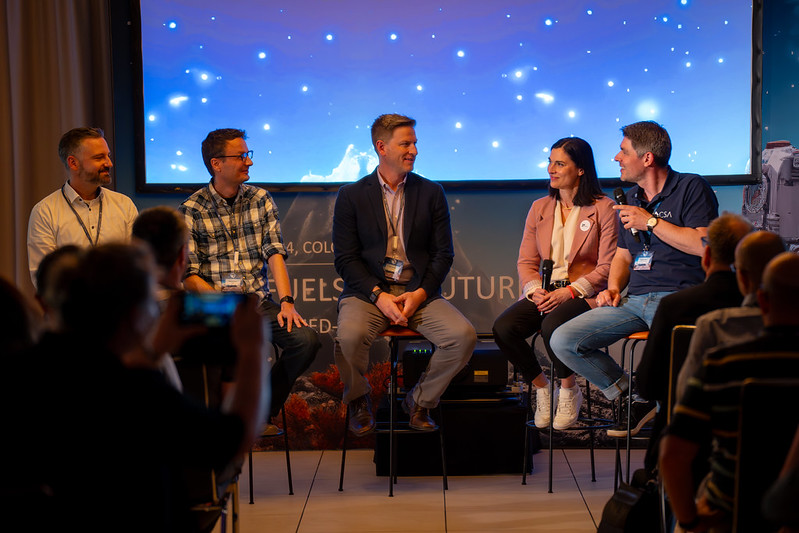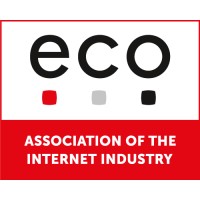Trust Fuels the Future: A Recap of the 2024 CSA Summit
Julia Janssen-Holldiek, Director of the CSA, delves into the 2024 CSA Summit, showcasing the evolution of email trust. This event brought together global leaders to collaboratively shape the future of digital communication.

© Certified Senders Alliance
Email has stood the test of time as a cornerstone of digital communication, evolving over four decades to become an indispensable tool in our daily lives. In Germany, this journey began in 1984. However, with its widespread adoption came challenges such as spam and abuse, prompting the establishment of the Certified Senders Alliance (CSA) in 2004 to safeguard legitimate email. Fast forward to today, and we at the CSA celebrated our 20th anniversary amidst a changing digital landscape. At this 2024 CSA Summit, email experts from across the globe converged to reflect on trust as the bedrock of email’s success. You can now join us on a journey through one day of the CSA Summit, where industry leaders, innovators, and stakeholders came together to shape the future of email.
40 years of email in Germany – 20 years of CSA
On the occasion of the 20th year anniversary of the Certified Senders Alliance (CSA), email experts from 20 different countries convened at the 2024 CSA Summit in Cologne, Germany. As the Director of the CSA, I was very happy to welcome the 180 participants at the summit, acknowledging how we all shared a common trait: a deep affection for email, coupled with a passion to make it even better. As such, the summit’s motto, “Trust Fuels the Future” resonated profoundly. As we all agreed, “If you want to go fast, go alone. If you want to go far, go together.”
Before looking forward to the future, I took a short trip to the past with Professor Michael Rotert, Honorary President of the eco Association. As he spelt out, email has effectively been up and running for 40 years now in Germany. 1984 was the year when Professor Rotert – who was then a computer scientist and an Internet pioneer – received the first email in Germany. This was quite an event: on 2 August 1984, he sat in front of his computer at the University of Karlsruhe and received a welcome message from the US scientific network CSNET, who wrote: “This is your official welcome to CSNET. We are glad to have you aboard.” As this was the first ever German email, it was also part of a revolution that was to have a massive impact on communication.
While email has taken a very successful journey from that point in time, the fact that it transitioned from purely interconnected academics from 1984 onwards meant that it soon started to face formidable challenges such as abuse and spam. To tackle these challenges, our CSA was therefore born in 2004, with its core purpose being to build a protected space for legitimate email.
Since its inception, we have steadily remained as a neutral entity in order to create a safe space for legitimate emails according to transparent criteria. From the outset, the CSA – as a service from eco – Association of the Internet Industry – has worked in collaboration with DDV (the German Dialogmarketing Association). In 2005, together we started the journey with 1&1 and inxmail, while in 2010, we expanded our international outreach with Yahoo and Cloudmark.
Moving forward to 2011, we at the CSA were very glad to gain a certification and complaints committee (ccc) in order to emphasize neutrality and relevance to practice. All in all, today’s members amount not only to around 100 certified senders, but also 45 partners.
Reflecting on the present state and future prospects of email, I posed a question to Professor Rotert about what his wish might be for the email on its 40th birthday. In a nutshell, Rotert responded: “Less spam!” Throughout the full room of the summit, a roar of approval resounded, reflecting the participants’ joint commitment to building trust.
Entering the age of AI and assistants
As a follow-on highlight of our summit on 23 April, Alex Charles, CPO of 1&1 Mail & Media Applications from Germany stepped on to the stage to offer insights about how trust fuels the future of email as we enter the age of AI and assistants. Acknowledging the rapidly changing digital landscape, Alex underscored how email has remained as one of the rare constants, representing Number 1 in matters of trust and security online.
Nonetheless, the email experience has remained more or less unchanged, in spite of the fact that private email has shifted from person-to-person conversations towards business-to-consumer transactions and promotions. From this angle, as Alex accentuated, end users are now approaching things in a different manner, meaning that it’s particularly important to see email through the eyes of the next generation. For instance, while young teenagers may initially show little interest in email, by the time they turn 16, they often recognize its significance, proclaiming that “Email is the key!”
How can the industry then work together to shape the next era of email? Alex shared crucial insights into where things will be running in the future. Effectively, to continue to thrive for the next 50 years, he noted that email needs to embrace change and innovation, entailing a quiet revolution in adapting email. In building trust, he noted how revolution encompasses three key areas: improving communication via key factors such as images and videos, newsletters, and conversations; powering identity, with a paradigm shift from address to identity; and enabling personal AI, with email being a highly flexible open communication backbone for the AI era. In wrapping up, he appealed to the expert audience to embrace the challenges that are out there – and to keep enhancing email.
Post-mortem on open rates
From a further perspective, in reviewing how to optimize future email campaigns for better engagement and effectiveness, Raymond Dijkxhoorn, CEO at SURBL from the Netherlands, and Jakub Olexa, Founder & CEO at Omnivery from Czechia, delved into the concept of post-mortem on open rates. Alongside click rates, such open rates have been steadily climbing over the past couple of years, with such numbers almost being off the charts in some cases. Behind such numbers, there is more than a trend, with Raymond commenting on the steady increase in non-human interactions. It is therefore imperative to identify non-human interactions in real time.
Both of these CEOs pinpointed how to track emails – via opens, clicks, ISP data and engagement – and reviewed how metrics have changed. They also shared insights as to who is playing with people’s data, with one particular benefit in this field being that of using the customers’ brand domain. In particular, when it comes to metrics and link tracking, they pinpointed how Email Service Provider (ESP) entries need to be recoded. If you move from one ESP to another – not to mention overall domain alignment – there is a need to customize and delegate these domains to the ESP. In this respect, tracker links are a really important approach. Jakub emphasized just how important it is to understand these trends and the forces behind them to help you clean up your data, fix your automations, and focus on proper Key Performance Indicators (KPIs). All in all, as they concluded, what is required is high-quality data and setting the right KPIs.

Enhanced feedback loops
From a related email marketing standpoint, Tobias Knecht, Founder & CEO at Abusix in Germany, shared his views on how feedback loops (i.e. a technical service provided by mailbox providers that reports back spam clicks from email recipients to the sender) are fundamental for good sender/receiver relationships and data exchange. As he stated, one of the most crucial online situations these days is for people to only receive the emails that they want.
While the past 12 months brought a few disappointments, Tobias was happy to portray how there has since been notable advancements in feedback loops – namely, the introduction of the Complaint Feedback Loop (CFBL) header, known as RFC-9477. While this makes it very simple for formal receivers, particularly those with privacy issues, collaboration between senders and receivers is integral in this endeavor. Effectively, he pinpointed a two-fold call for action: firstly, that senders adopt the RFC-9477 and spread the word; and secondly, that receivers make feedback loops available. Overall, in interacting on a weekly basis, all senders would have a better deliverability and can improve their collection of feedback loops, while receivers of all sizes can easily offer them. Because, ultimately, collaboration is clearly the linchpin in building trust.
Scoring with trust: How innovation & quality shape Bundesliga’s B2B2C marketing
Collaboration clearly takes place across multiple borders in the whole field of email. In Germany, for instance, a national treasure is the national football league, the “Bundesliga,” embracing 36 football clubs and captivating over a billion fans worldwide. On this topic, Dennis Galejski, Head of Product Management at DFL Deutsche Fussball Liga and Bjoern Koester, Founder & Chief Executive Officer at Webstrategy zeroed in on “scoring with trust.” As Dennis proceeded to explain, effective communication is a cornerstone of DFL’s strategy, with over 50 different products tailored to each media partner’s audience. The communication strategies of football’s innovation leaders in the challenging B2B and B2B2C environment involve orchestrating with 75 media partners in 211 countries. The DFL makes sure it lives up to its own uncompromising quality standards, with trust playing a central role. In this regard, the Bundesliga keeps its visual graphics not only appealing, unique, and coherent, but also consistent between its platforms. As Bjorn aptly put it, when it comes to their use case, they are “under pressure – but pressure makes diamonds!”
From blind trust to brilliance
While trust is unequivocally essential for email, it must be grounded in knowledge, not blind faith. This was the focal point conveyed by Janine Hummel, Director of CRM & E-Mail Marketing at Front Row Germany. As she identified, it’s common for marketing and CRM teams to heavily rely on ESPs and IT departments for email deliverability. However, she warned that without a deep understanding of the underlying processes, this dependence can often have far-reaching consequences. What is therefore required is to empower email marketers with knowledge and to develop a general understanding of email deliverability in the marketing field.
By stepping beyond dependency and embracing a foundational grasp of the mechanics behind campaigns, Janine spotlighted that nobody should “live in a bubble or work in a bubble.” In other words, a more collaborative and informed approach is required, enhancing both the control and impact of marketing efforts. This entails breaking out of organizational silos and establishing cross-unit teams or monthly meetings, as some KPI units have already started to do. In drawing to a close, she noted that errors can be minimized, and the effectiveness of email campaigns can be optimized by facilitating communication and learning from each other.
How CSA complaint monitoring foiled a bot attack
A follow-on lightning talk was provided by Sarra Papadopoulou, Senior Deliverability Manager at Sitecore from Greece, focusing on how our CSA complaint monitoring thwarted a bot attack. Sarra “spilt the beans” on how CSA complaint monitoring saved the day at Sitecore. Homing in on how CSA defended subscription forms, she shared how they helped her company to identify bot attacks on her clients’ subscription forms, thereby preventing major damage. She also acknowledged how complying with our CSA certification requirements helped Sitecore build a virtual fortress for such forms, with the security of subscription sources regarded as particularly critical.
Basics of a data-driven performance plan
Another great lightning talk was provided by Kevin Steba, the CEO & Co-Founder at SEINō from the Netherlands. As Kevin underscored, optimizing resources and budget is the absolute key to success for a data-driven performance plan. In his discussion, he demonstrated how such a plan can help to strategically request internal resources. In particular, he noted that, by setting KPIs, companies enable the team to make smart business decisions about the direction of all current projects. As he summarized, the following three approaches are required: gaining a comprehensive understanding of the big picture; finding the main reason by comparing key numbers; and maintaining a clean database.
Decoding email UX: The science of user attention
The last but not least lightning talk came from Gabriel Gastaud, Founder of Viaretina from France, who covered the concept of decoding email user experience (UX). Due to the fact that the attention of customers is precious, but also somewhat limited, Gabriel advocated for emails to be accessible, clear, concise, and action-oriented. Here he explored key elements influencing user attention in emails, with this offering a guide on how cognitive insights enhance email UX. For instance, loading time has a clear impact on conversions, applying not only to the web, but also to email. Moreover, when it comes to scanning, users base their first impression on design, with AI being a particular advantage for eye-tracking. Delving even deeper, Gabriel provided advice on how to act with emails. In this regard, friction points such as CTA viewability, processing order, and usability can be particularly impactful. Overall, he underscored how such pragmatism in email marketing is absolutely indispensable.
Good and bad practices seen by anti-spam and mailbox providers
In the further pursuit of trust, Axelle Allouch, Head of Anti-Abuse at Orange, and Stéphane Decamps, Head of Anti-Abuse & Public Relations at Vade from France, delivered an astute talk, addressing good and bad practices seen by anti-spam and mailbox providers, and which of these to follow. As they stressed, their main concerns relate to malicious emails which don’t actually look like spam or phishing. As such, to address this challenge, there must be a list of what recipients must know and how they can trust the sender – with trust required in particular from ESPs.
Axelle and Stéphane proceeded to offer three strong tips to the expert audience. Firstly, they emphasized the need to acknowledge the power wielded by recipients, given that they can report on whether or not the email is spam. As such, the senders need to be transparent about who they are, their purpose of contact with the recipients, the legitimacy of their emails, and recipients’ opt-out options. Secondly, senders must display to recipients that their emails are actually interesting, based on their intelligence, the avoidance of misleading content, an adaptation of marketing pressure, and an offer of a preference center. And lastly, aiding mailbox providers and filters in distinguishing malicious emails from legitimate ones emerges as a critical endeavor in fortifying email security and trustworthiness.
Protecting your brand messaging
Further valuable insights were gained on the topic of protecting brand messaging, with this addressed by Martijn Groeneweg, CEO at DMARC Advisor and Koen Wackers, Solution Consultant Cybersecurity at PostNL from the Netherlands. As they remarked, it’s tough to know that good emails can end up in spam, while fraudulent or impersonated emails can end up getting delivered. What was therefore important to hear from Martijn is that, since 2012, DMARC has addressed this challenge as an open standard that allows domain owners to specify how their emails should be treated by receivers. As he stated, when configured correctly, DMARC ensures that only legitimate emails are delivered, while fraudulent ones are blocked.
Nonetheless, while DMARC has proven to be very effective in combating abuse, a further good system is needed to protect those who are not security experts or who are not interested in the mechanics. In other words, Martijn stated that verifying trusted email should be as easy as “checking for dry feet.”
To therefore simplify the process of verifying email authenticity, both Martin and Koen highlighted how the new BIMI approach (Brand Indicators for Message Identification) has emerged. This is an experimental standard that enables logos to be displayed in email inboxes, making it easier for recipients to recognize trusted emails at a glance. BIMI implementation requires three prerequisites: a DMARC policy set to “reject or quarantine”; a logo in SVG format; and a Verified Mark Certificate obtained from Entrust or DigiCert. As shared by Koen, PostNL has embraced BIMI, given that the rise of e-commerce in the Netherlands means that a high number of customers interact with PostNL – meaning that his company is an ideal target for phishers. Collaborating with DMARC Advisor, PostNL therefore has adopted BIMI as an ideal solution to enhance email trustworthiness.
Domain reputation as the future anchor of trust

In the final session of the day, the spotlight fell on “The Future Anchor of Trust,” a topic expertly moderated by Sebastian Kluth, Technical Lead of the CSA. Joining him on the panel were Arne Allisat, Head of Product Management Platform Services at 1&1, Marcel Becker, the Senior Director Product Management at Yahoo, Petra Maelzer, Director Commercial Strategy at Inxmail, and Seth Charles, the Senior Director Delivery Operations at Iterable.
Sebastian set the stage by emphasizing how trust plays a crucial role in the success of the email ecosystem – and therefore the success of commercial email. He posed key questions to the panel: What are the trust anchors in email delivery in 2024, and which topics do the panelists regularly offer to their clients? And what needs to be done from an ESP angle when trust between senders and receivers is compromised?
In his response, Arne stressed the importance of acting in the consent and legitimate interest of the recipient, explaining that while legitimate interest might justify sending emails without explicit consent, it must align with the recipient's expectations and desires. As he underscored, a primary trust anchor in email marketing is the recipient’s relationship with the brand. He also expressed gratitude to our CSA, with retrieving data being of optimal relevance. As he stated, if any misuse was identified, data would no longer be shared.
From his perspective, Marcel acknowledged that customers’ current tendency is either to simply accept or reject emails outright, with this leading to a real disarray that needs to be tackled. He emphasized the importance of visual elements such as the sender’s logo in establishing trust within an email, and highlighted that these visual cues help recipients recognize and trust the brand. He also advocated for a focus on creating a positive user experience and ensuring that emails are desired by the recipients, rather than merely complying with regulations.
From her end, Petra called on all of the email companies to focus on professional email marketing, citing that this is “all about relationship” between ESPs, mailbox providers, and brands. Petra also echoed Marcel’s support for BIMI, noting how ideal it is to work with ESPs who support BIMI, with this being a “win-win” situation. She then continued to highlight the substantial value of our CSA criteria, particularly in fostering collaboration and responsibility.
This sentiment of our CSA was also mirrored by Seth. He was of the opinion that there are several approaches to gaining trust, with a variety of different models available. One recommendation from his end related to educational support, relating in particular to educating customers about best practices and providing necessary tools to implement these practices effectively. Customer screening to ensure adherence to best practices is also of paramount importance.
Bidding adieu – while looking ahead!
As we brought our discussion on 23 April to a close, it was highly evident that trust lies at the heart of our exploration. Through the insights shared and the conversations engaged in, we uncovered the vital role that trust plays in shaping the future of email. From the inaugural moments of email to the present-day challenges and innovations discussed, one thing remains clear: trust is the cornerstone upon which the future of digital communication is built. With insights from industry leaders, innovators, and stakeholders, our 2024 CSA Summit paved the way for collaboration, innovation, and security in email. This summit has been more than a gathering; it’s been a testament to the power of trust in shaping the future of communication. And we naturally very much look forward to our follow-on CSA Summit in 2025!
In our follow-on dotmagazine edition on “Building Trust in the Digital World,” due to be published on 26 June 2024, you'll find three more in-depth articles derived from the 2024 CSA Summit!
Julia Janssen-Holldiek became part of the CSA team in 2014 and Director in 2017, and is passionate about creating and enabling quality standards for commercial emailing. Prior to the CSA, she worked for several years in Marketing and Sales at Dell. Julia studied business administration at the University of Cologne and the Universidad Torcuato di Tella, Buenos Aires.







